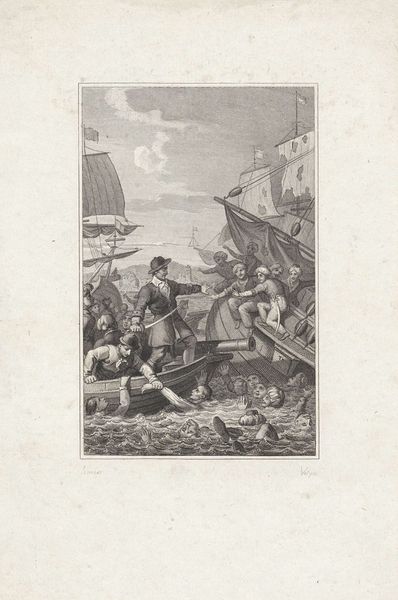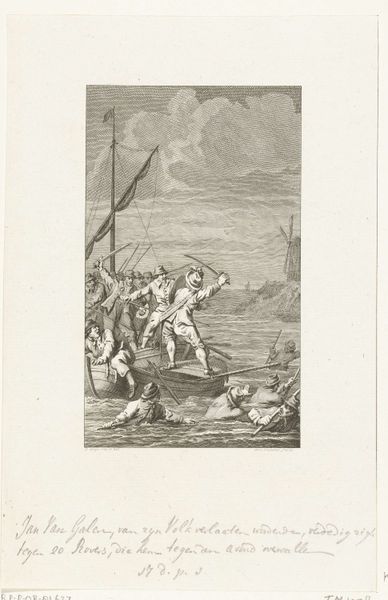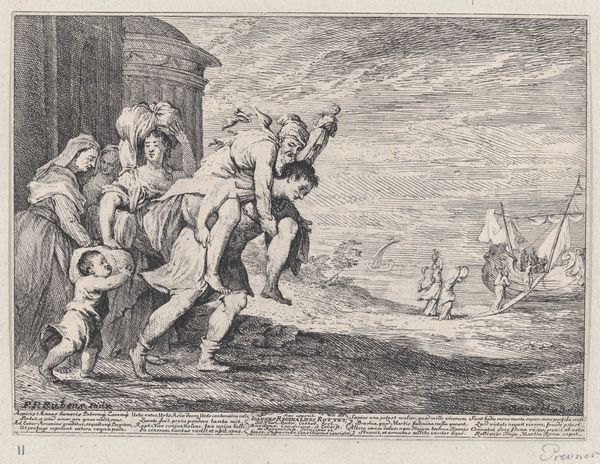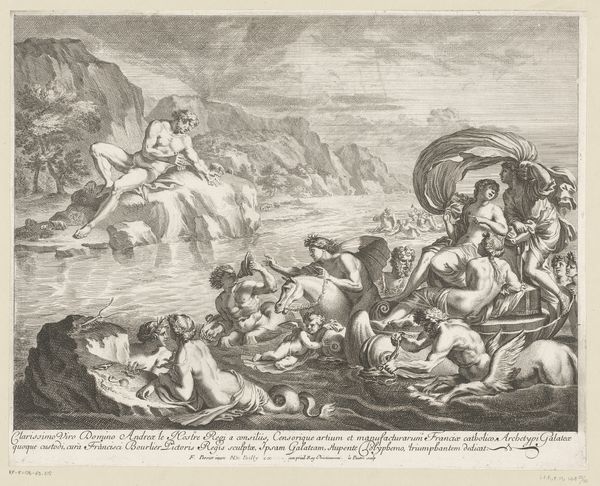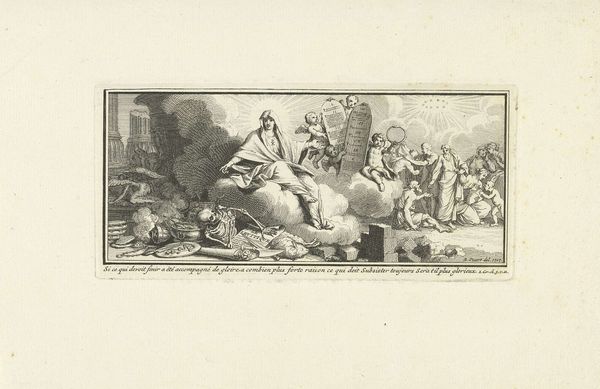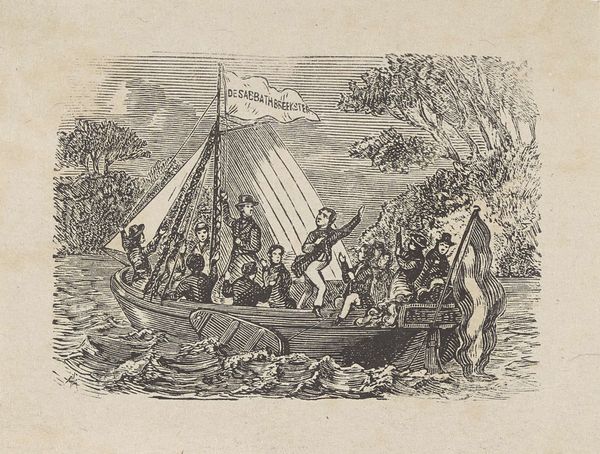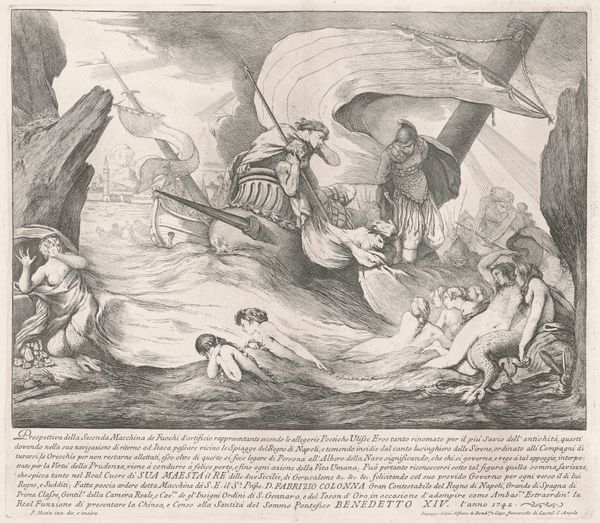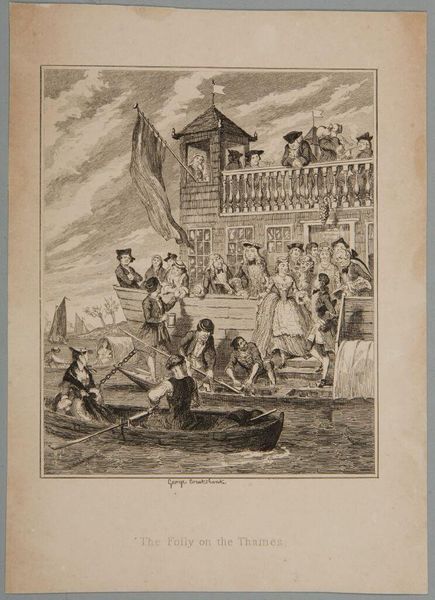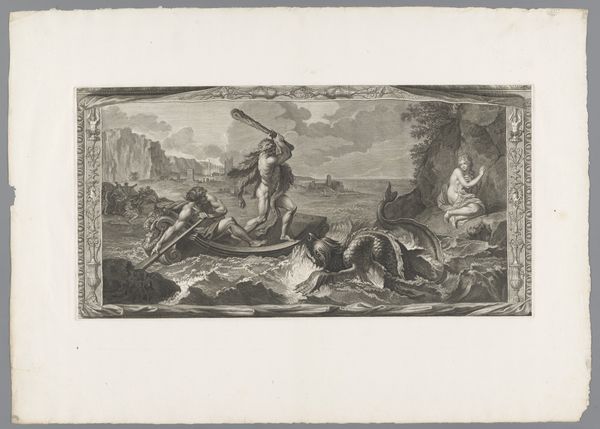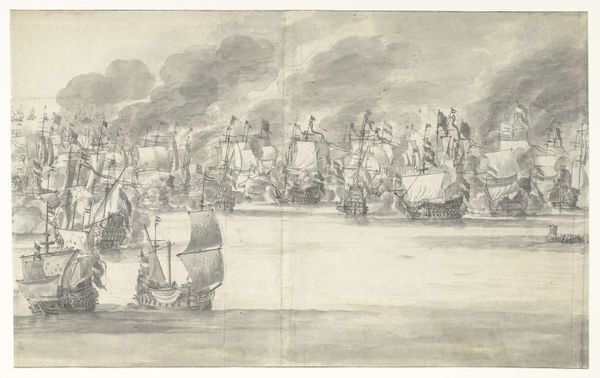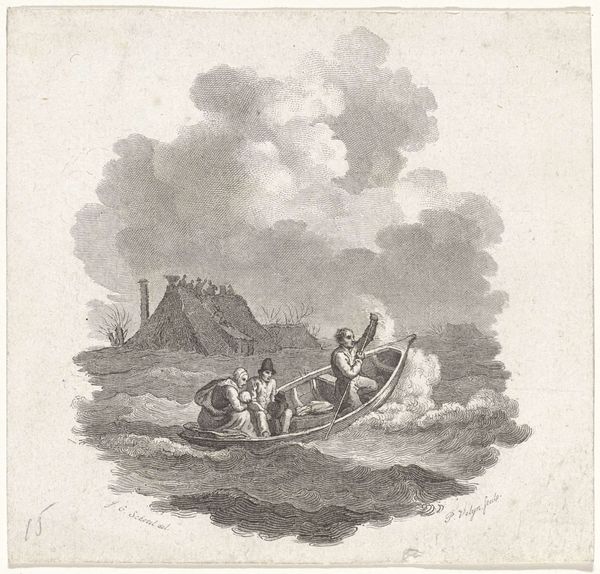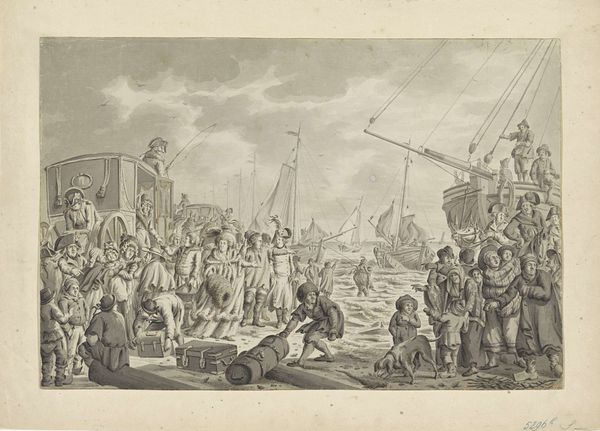
print, engraving
#
narrative-art
#
baroque
# print
#
landscape
#
figuration
#
history-painting
#
nude
#
engraving
Dimensions: height 281 mm, width 382 mm
Copyright: Rijks Museum: Open Domain
Johannes Glauber created this image of ‘Odysseus and the Sirens’ as an etching in the late 17th or early 18th century. It depicts a key episode from Homer’s Odyssey: the hero Odysseus is tied to the mast of his ship so that he can safely hear the song of the sirens. His crew, with wax in their ears, row on, oblivious to the danger. The Greek myths were often used in art of this period to explore human psychology. The Sirens, as hybrid woman-beasts, can be interpreted as embodiments of dangerous feminine wiles that threaten the male world of reason, order, and seafaring. We might also ask: what is the social function of images like this? Who was it made for, and what kind of cultural values does it promote? In this period, the fine arts academy was becoming an increasingly important institution. Here artists would receive training and instruction, and they would learn to reproduce conventional ideas about beauty and virtue. To better understand this artwork, we could research the history of the fine arts academy. We might ask how it shaped artistic production. We might also look into the reception of Greek myth at this time. How was it used to buttress or challenge existing social norms?
Comments
No comments
Be the first to comment and join the conversation on the ultimate creative platform.
